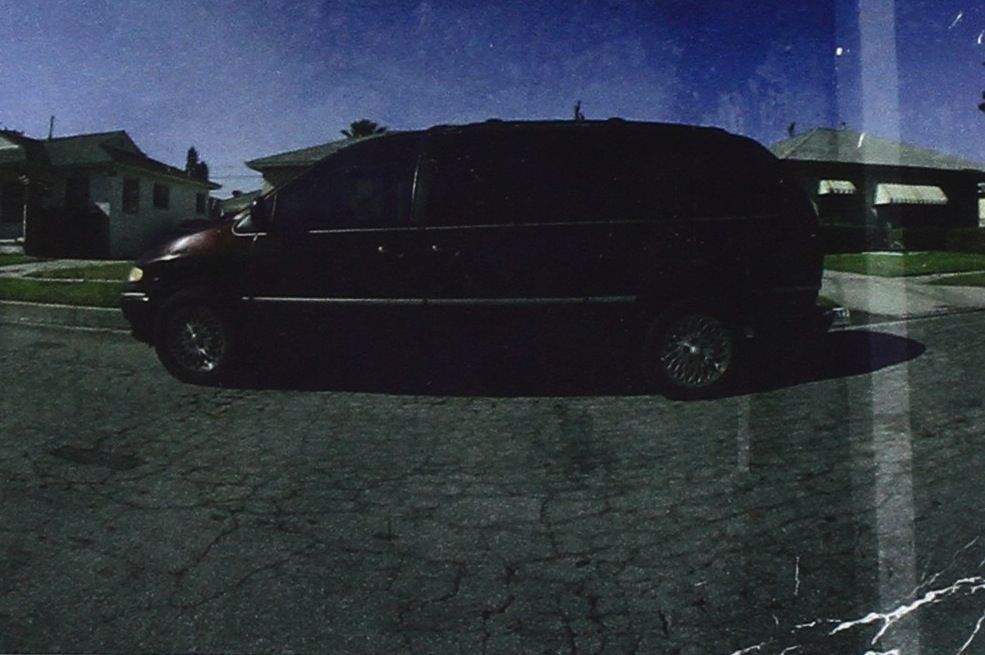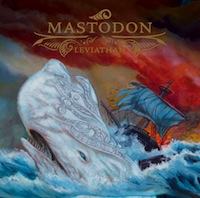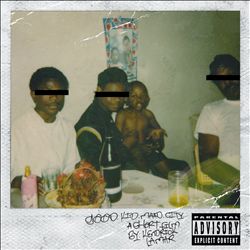10 Essential 21st Century Concept Albums

For how baffling and tragic much of 2016 has been, one thing it’s shown us that’s been a positive is that the album is alive and well. We can’t say if it’s selling great, of course, but the artistry remains strong as ever, with a number of artists pushing their own creative limits in new and interesting ways. But looking back, the century thus far has yielded a long list of albums that work as a cohesive whole. Some of them even feature concepts that recall the epic sprawl of prog rock, albeit in the form of a number of different genres. We assembled a list of 10 albums from the past 16 years that prove the concept album is alive and well. And you can believe there are a lot more where these came from. It may be but a small sampling of the conceptual riches of the new millennium, but we hope you enjoy our list of 10 essential 21st century concept albums.
 The Mountain Goats – Tallahassee
The Mountain Goats – Tallahassee
(2002; 4AD)
John Darnielle’s bleak narrative of a storied Alpha Couple is an underrated masterpiece when compared to some more well-known concept albums, even those lower down on the list. Its title track provides the perfect entrance point for listeners into the desperate, sun-drenched acoustic sequence of the album, like the perfect first sentence to a novel or short story. From there, there’s a tragic, poignant awareness in the narrative of its 14 songs that, when followed, describes the highly dysfunctional and destructive relationship between a set of recurring characters (the Alphas) found throughout The Mountain Goats catalog. It operates on a different level musically when compared to other concept albums of a similar nature. There’s a prevalent minimalism throughout that allows just enough impact for the simplest of instruments or vocals to have the largest impact possible. A harmonica never sounded so desperate or daring before or after this. – Brian Roesler
 Queens of the Stone Age – Songs for the Deaf
Queens of the Stone Age – Songs for the Deaf
(2002; Interscope)
If you’re looking for a running storyline in the songs on Queens of the Stone Age’s third album, Songs for the Deaf, you won’t necessarily find one. It’s not that kind of concept album. But that doesn’t mean a concept doesn’t surround it in how it’s packaged, sequenced and compiled. Taken individually, each of the tracks is simply a great rock song, made all the better for the guest drumming of perennial ringer Dave Grohl. Yet listening to the album in its entirety takes on a different character. Conceived as the soundtrack to a drive from Los Angeles to their native Palm Desert, the songs are connected with segues from fictional radio DJs, some in English and some in Spanish, narrating the commute by lending each leg a distinct personality. Which is to say like most DJs, they get a little grating after a few listens (and there’s nothing wrong with simply queueing up highlights “No One Knows,” “First It Giveth” and the title track on their own). It’s a clever presentation for a mainstream rock album, however, and Queens of the Stone Age might be one of the last bands in the modern era to do any such thing. – Jeff Terich
 Tom Waits – Alice
Tom Waits – Alice
(2002; Anti-)
In 1992, Tom Waits wrote music for an avant-garde opera loosely based the darker side of Charles Dodgson’s (aka Lewis Carroll) relationship with young Alice Liddell. It is said that he may have possessed a longing for the young girl, beyond memorializing her in her fictional adventures. Ten years later, Waits released those songs as Alice. The songs on Alice merge melancholia and fantasy in ways that reflect Carroll’s stories’ tone (“We’re All Mad Here” and “Everything You Can Think of is True”) and Waits’ own penchant for vivid storytelling (“Poor Edward” and “No One Knows I’m Gone”). The backing orchestra is innovative, mixing lush strings and woodwinds with primitive percussion. While songs such as “Table Top Joe” and “Kommienezuspadt” feature Waits’ signature garbage-disposal growl, he also composed some of his most haunting and gorgeous melodies on “Fish and Bird” and “Barcarolle.” In the end, the listener feels stuck between two worlds: fiction and dream, unsure which to believe and refusing to admit that neither are real. – Chad Gorn
 Mastodon – Leviathan
Mastodon – Leviathan
(2004; Relapse)
As metal concept albums go, Mastodon’s Leviathan achieves epic status by default, invoking Herman Melville’s literary classic “Moby Dick.” It’s not the band’s only concept album, not by a longshot—2006’s Blood Mountain found the band crafting a similar man vs. nature narrative in its Clash of the Titans-style depiction of beast-slaying feats, while 2009’s Crack the Skye channeled personal grief into a psychedelic depiction of Tsarist Russia. Leviathan is more direct, however, and as such has a clearer and more successful central conceit. The gnashing of the whale, the intensity of violence on the high seas and the inherent tension of man’s fatal inability to capture the thing that most consumes him—it’s all there in the burly sludge metal anthems, which are some of Mastodon’s finest. That the band instead opted for clowns in their video of “Blood and Thunder” seems like a sorely missed opportunity, but trolling can be epic too, I suppose. – Jeff Terich
 The Antlers – Hospice
The Antlers – Hospice
(2009; Frenchkiss)
Part of what makes a concept album truly work is the narrative it’s beholden to. Hospice is a grizzly and harrowing work, which seeks—if nothing else—to completely hollow you as a human being. Dealing with a hospice worker’s romantic entanglement with a patient with terminal bone cancer, Hospice is an album with a palpable feeling of mournful hopelessness. Singer Peter Silberman’s vocal styling is responsible for at least 50 percent of the latent intensity of the narrative, a quivering whisper of toiling emotions, annunciating with ruthless efficiency a narrative of intense tragic beauty, backed by the sometimes gigantic walls of sound produced by the band, as if to jolt you from the dreamy vocal patterns. It is passionate, powerful and pragmatic in its vision of a relationship that is cultivated through frailty and exposed through its own flaws. Hospice is a direct narrative of suffering without any obfuscation at all, its music perfectly pairing with the rollercoaster anyone experiences in a relationship, with an ending that either uplifts and destroys. – Brian Roesler
 The Decemberists – The Hazards of Love
The Decemberists – The Hazards of Love
(2009; Capitol)
Released as a rock opera, The Hazards of Love feels more like a series of warnings than a story. While there are characters, like the pregnant Margaret, the wide-eyed William and the malicious queen, and a loose tale composed of jealousy, loss, bargains, revenge and other “hazards of love,” the music is what pulls the concept together. The story is told best through the Decemberists’ experimental forays into new (for them) genres, expanding past their familiar indie folk sound. They explore textures and melodies, verging on metal on “A Bower Scene” and post-punk on “The Rake Song.” Other numbers such as “Won’t Want for Love” and “The Wanting Comes in Waves” are mini-rock operas with enough changes and depth in each song to stand as isolated stories. The title track repeats as a theme and helps carry the story forward, but you could be forgiven for ignoring the tale and appreciating how the music weaves and flows, describing its own plot. – Chad Gorn
 Janelle Monáe – The ArchAndroid
Janelle Monáe – The ArchAndroid
(2010; BadBoy)
It’s one thing to release an album as complex and intricately detailed as Janelle Monáe’s The ArchAndroid, but taking into account that it’s her debut album is even more impressive. Following a series of EPs that served as a prelude to the sci-fi song cycle, The ArchAndroid follows a narrative inspired by Fritz Lang’s silent masterpiece Metropolis, both in its humanist themes and in part its art direction. Monáe takes on the role of Cindy Mayweather, an android sent back in time to save the citizens of Metropolis from The Great Divide, a greedy corporation that aims to take away people’s freedoms. Despite the sci-fi, time-traveling themes, however, the idea of the individual vs. a faceless corporation is all too important a statement today, and the greatest moments on the album, such as “Tightrope” or “Cold War,” are those that transcend concept. Still, listen to it from front to back and Monáe will offer up one of the most innovative pop records of the modern era. – Jeff Terich
 Fucked Up – David Comes to Life
Fucked Up – David Comes to Life
(2011; Matador)
In 2011, Canada’s versatile progressive punk outfit Fucked Up wrote and released an anthemic conceptual rock opera that soared majestically without tempering the intense vocals of leader Damian Abraham. The resulting work is just as unique and engaging as listeners could have hoped for, given the ambition. Tracks like “A Life In Paper” display a variety of influences and sensibilities in crafting a work that spans a titanic 77 minutes of full-throated punk vocals backed by a noisy symphony. David Comes to Life is a culmination of a narrative experiment that started years prior to the actual development of a cohesive concept album and represents a band’s maturation from disciples of punk into maestros of something else entirely. It glimpses into a young man’s longing for a young female anarchist who meets a violent end, leaving the rest of the album to explore the depths of loss, and triumphs of healing—an impressive feat for a band that was previously known for naked stage diving. – Brian Roesler
 The Roots – undun
The Roots – undun
(2011; Def Jam)
On paper, the outline of The Roots’ undun seems needlessly complicated: The tragic tale of Redford Stevens—a composite character based on onetime friends of the band and The Wire‘s Avon Barksdale, with name provided by Sufjan Stevens, oddly enough—told backwards in an interlocking song cycle. But for how high-concept it is, the album isn’t the arty pretentious mess it sounds in the abstract. Instead, it’s a compelling and unfortunate slice of life that evades rap clichés by instead focusing on one unremarkable character who never really had a chance. Which makes it terribly sad, of course, though it’s delivered through some of the group’s most interesting musical pieces, none of which necessarily amount to single-worthy jams but fit together as part of a greater, artfully crafted whole. It was followed by the satirical ...And Then You Shoot Your Cousin, which also followed a similar set of storytelling devices, but the realness, fiction or not, inherent to undun is what makes it one of the band’s most interesting albums since the turn of the millennium. – Jeff Terich
 Kendrick Lamar – good kid, m.A.A.d. city
Kendrick Lamar – good kid, m.A.A.d. city
(2012; Top Dawg/Aftermath)
To date, two out of Kendrick Lamar’s three studio albums are concept records, the exception being 2011’s Section.80. Last year’s To Pimp a Butterfly was an extended funk- and free-jazz-influenced meditation on Tupac, fame and his own responsibilities as a public figure, or lack thereof (a lot of songs read as an internal monologue, despite some definite bangers). The central conceit of good kid, m.A.A.d. city is more directly autobiographical, however, detailing Lamar’s youth growing up in Compton. Credit goes to Lamar’s vision for allowing an album in which every song has a different producer to seem so cohesive and interconnected. As he balances struggles with everything from the realities of violence in his neighborhood to avoiding the traps of substance abuse, Lamar tells a classic coming-of-age story through verse that range from touching to harrowing, with good humor, affection and non-stop lyrical fire (he still hasn’t stopped and it’s been four years). Just to tie it all together, it ends exactly where it starts, with Lamar borrowing his parents’ van to meet a girl. – Jeff Terich


Needs more The Streets “A Grand Don’t Come For Free”
To Pimp A Butterfly should be on here. Imo its the greatest concept album of all time